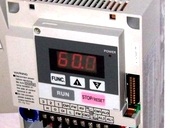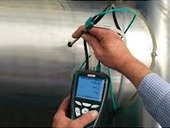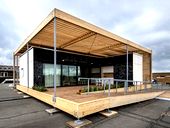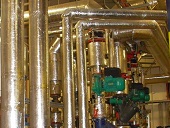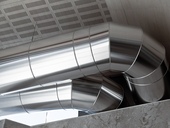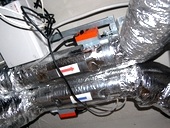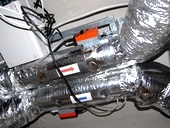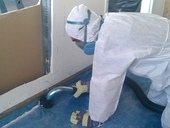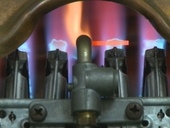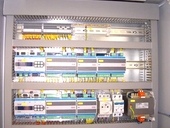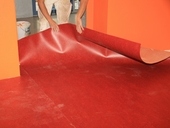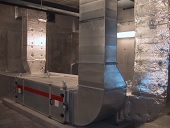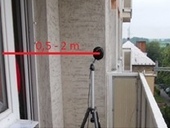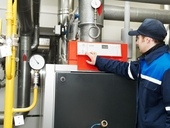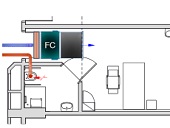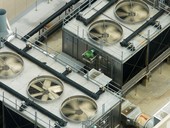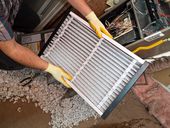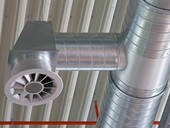This publication explains the principles of designing efficient ventilation systems with low fan power and hence little fan noise. The main topics are: definition, measurement, and rating of specific fan power and fan system efficiency; how the design of the air handling unit, distribution system, and controls influence pressure losses and fan system efficiency.
Archiv článků od 8.7.2013 do 14.4.2014
This paper informs reader with valid legislation and methodology verifications air-conditioner and fire breather systems, which is valid in Czech republic. Paper is intended not only for reader, who deal with installation these systems, but also for user air conditioning e.g. in shopping centres, office buildings, residential complexs etc.
In October 2013 in Orange County Great Park in city of Irvine, California, took place the sixth edition of the prestigious international competition of universities U.S. Solar Decathlon 2013. This round took part also Team Czech Republic from the Czech Technical University in Prague, which finished at overall third place. The article describes in detail building services used in the AIR House.
The first part of the series focused on explosion protection, describes the measures of primary explosion protection which means preventing of explosive atmosphere occurance. This kind of protection includes preventing the formation of explosive atmosphere by exclusion of flammable substance or oxidising medium. The article further describes the options of inerting technology with an explosive atmosphere and other possible measures.
For the near future the expectation of experts is that the most promising systems will be based on demand-controlled hybrid ventilation technologies. Hybrid ventilation systems can be described as systems providing a comfortable internal enviroment using different features of both natural ventilation and mechanical systems at different times of the day or season of the year.
For the near future the expectation of experts is that the most promising systems will be based on demand-controlled hybrid ventilation technologies. Hybrid ventilation systems can be described as systems providing a comfortable internal enviroment using different features of both natural ventilation and mechanical systems at different times of the day or season of the year.
For the near future the expectation of experts is that the most promising systems will be based on demand-controlled hybrid ventilation technologies. Hybrid ventilation systems can be described as systems providing a comfortable internal enviroment using different features of both natural ventilation and mechanical systems at different times of the day or season of the year.
Asbestos is often mentioned in connection with the construction industry, especially with the school buildings. Wrong way of asbestos removal meant a multimillion cost of cleaning the property. Unfortunately, these cases do not cause a change in legislation that would regulate working with asbestos.
Passive temperature sensors are the first choice in building control systems. They are cheap and easy to install thanks to their polarity independence, compared to active sensors with voltage or current output. However, deployment of passive sensor may lead to problems, which – and debugging of which – are dealt in the following article.
Recently, healthiness of the indoor space of buildings has been discussed more and more often. One of the points of view has been also presence of toxic substances, released into the indoor space from materials used for construction and design of the rooms, and from furniture. The most questionable materials include certain plastics, and, among them, especially polyvinyl chloride (PVC). Among other things, phthalates (used as plasticizers for PVC) may be released from this plastic. The Arnika Association commissioned analyses of 5 samples of floorings and 3 samples of wallpapers made of soft PVC. Phthalates were found in all the samples, in the range from 4.85 to 17.03 % of the product weight. In two of the samples, di-(2-ethylhexyl)phthalate (DEHP) was used as the plasticizer. DEHP will be banned in the European Union from 2015, together with 3 further phthalates. The remaining samples contained di-isononyl phthalate (DINP) and di-isodecyl phthalate (DIDP). These phthalates will not be banned, but they are also questionable from the point of view of health impacts. Four years ago, the Arnika Association took also samples of dust inside various buildings. Phthalates were found in all of them. The highest phthalate concentration was found in dust from a school dining room with flooring made of PVC. Presence of certain phthalates in dust is risky especially for young children. Phthalates are related to allergies (BBP, DEHP, and DINP) and asthma development (DEHP) in children.
Article presents the results of expert authors work to address the critical situation associated with a negative opinion of the authority concerned czech KHS and impending ban trial operation structures associated with adverse acoustic impacts of construction traffic on the surrounding buildings object. Technical modifications and methods to prevent the reported results were described in Article Equivalent sound pressure level outside space in practice. Text contains the results of measuring the noise level around buildings and not just before and after the implementation of modifications to reduce the acoustic parameters, but also the results of control measurements on site and in the surrounding area. The purpose of this article is to assess the contribution made arrangements for acoustic comfort.
Operational guidelines contain instructions for the behavior of workers in a variety of operational and emergency situations, clarify reporting lines and defines the personal responsibility of individual employees. Operating rules contain instructions for the operating individual units and maintenance instructions.
The present study describes the methodology used for the determination of carbon emissions from HVAC systems in order to assess possible options for greener systems. Simple tools were developed and applied for this purpose [1] and a case study was performed on an inpatient ward of an hospital building located in Faro, Portugal, being considered fan coils and chilled beams as terminal units.
Less experienced HVAC field service managers sometimes tend to have difficulties in identifying the causes of technical problems that common practice brings. The table in the article can be used both ways – to find the cause of the problem or use it as a basis for a maintenance plan designed to prevent the faults and equipment failures.
The article is based on the Milos Lain presentation for Janka Company in 2013. The current standards in the ventilation rate based on Czech legislation from 2012 2013 are presented in the paper. Comparison to EU and ASHRAE standards is in the paper as well. New Czech legislation about inspection of AC systems is mentioned in the last part.
zpět na aktuální články
